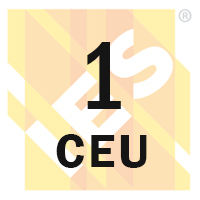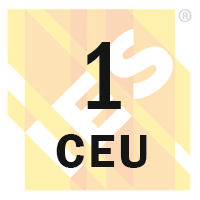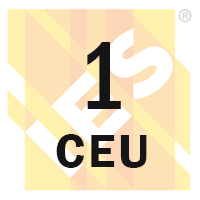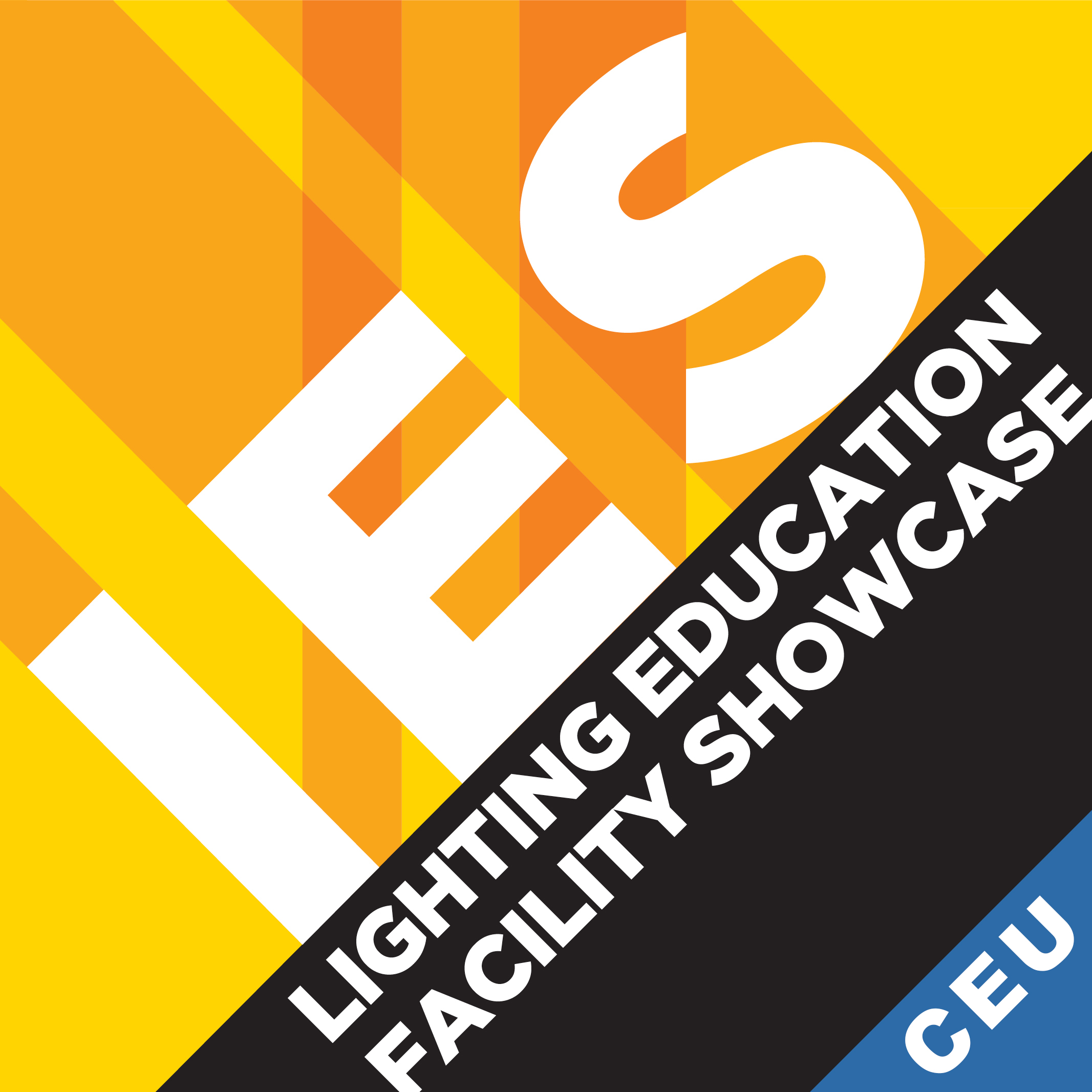
Light & Color Course Package
-
Register
- Non-member - $160
- Member - $60
The Light & Color Course Package includes five courses that represent important aspects of light and color, including TM-30, evaluating Spectral Power Distribution, the history of Correlated Color Temperature, and more. Buy these courses as a package, and you get access to five courses for the price of four.
-
Contains 4 Component(s), Includes Credits
This presentation will summarize the previous literature on color discrimination and discuss recent work in this area. A recently published study by the current speaker will be discussed, which dispels the conventional wisdom that gamut area is a predictive color discrimination metric.

About this Course
The IES offers a series of webinars that provide supplemental education to coincide with a recently revised or new IES Standard (Recommended Practice - RP, Technical Memorandum - TM, etc.). TM-30, in 2018 and Beyond: Guidance for Improving Color Quality is part of the IES Standards Webinars.
Description: Color rendition is commonly considered within three conceptual frameworks; color fidelity (the rendition of objects such that they appear as they would under a familiar reference illuminant), color preference (the rendition of objects such that they appear pleasant, vivid, or flattering), and color discrimination (the ability to distinguish colors of slightly different hue when viewed simultaneously). Color discrimination has been studied less frequently than color fidelity or color preference, though it is no less important. This presentation will summarize the previous literature on color discrimination and discuss recent work in this area. A recently published study by the current speaker will be discussed, which dispels the conventional wisdom that gamut area is a predictive color discrimination metric. This presentation will detail a new measure of color discrimination, which shows strong predictive ability of experimental results.
Learning Objectives:
By the end of this course learners will be able to...
1. Explore a method of modeling color discrimination and color rendition.
2. Understand elements of color rendition, and TM-30.
3. Explore an in-depth study of the relationship of gamut area and color discrimination.
4. Describe the limitations of current color metrics.
Tony Esposito, PhD
Tony Esposito holds a doctorate in Architectural Engineering from Penn State University with a minor in statistics. His specialties include color science, color discrimination, human factors research methods, circadian metrics, and spectral modeling and optimization. His primary research goal is to develop an accurate and intuitive color discrimination metric for applied lighting.
Tony is a former graduate education fellow to the National Science Foundation, has won the Robert J. Besal Scholarship four times, is a recipient of the 2019 Richard Kelly Grant, and is a recipient of the 2019 Walsh Weston Award from The Society of Light and Lighting for the best fundamental lighting research paper published in Lighting Research and Technology. He currently serves as a voting member of the IES Color Committee, formerly lead the task group that developed IES TM-30 ANNEX E and F (recommended specification criteria using IES TM-30), and is the Founder and Head Research Scientist of Lighting Research Solutions LLC.
-
Contains 3 Component(s), Includes Credits
This webinar covers the history of the development of TM-30, and the updates included in the TM-30-18 publication.

About this Course
The IES offers a series of webinars that provide supplemental education to coincide with a recently revised or new IES Standard (Recommended Practice - RP, Technical Memorandum - TM, etc.). You can review this standard in the IES Webstore.
Description: This presentation will cover updates to TM-30, and how ongoing research is providing knowledge that allows for improved color quality. It will discuss where TM-30 stands within the North American and international lighting communities and demonstrate new features that may be added over time (feedback welcome!). In general, the emphasis will be on translating science into practice, with a focus on specification and highlights of new products being designed using TM-30.
Learning Objectives:
By the end of this course learners will be able to...
1. Describe the history and evolution of color rendition measures.
2. Understand the information within TM-30, including the calculation framework.
3. Review key elements of TM-30 including Average Color Fidelity and Fidelity Index (Rf), Gamut Area and Gamut Index (Rg).
4. Read Vector Graphics to determine color characteristics of a light source.
Michael P. Royer
Engineer
PNNL
Dr. Michael Royer is a chief engineer at PNNL, where he primarily works on the Advanced Lighting Science and Technology Research program, sponsored by the U.S. Department of Energy. His research focus is human factors in lighting. Michael is a Fellow of the Illuminating Engineering Society (IES) and serves on the IES Vision Science Committee and the IES Color Committee. He is an associate editor for the journal Lighting Research & Technology.
-
Contains 3 Component(s), Includes Credits
This webinar will look at recent developments in the specification and evaluation of color rendition including an overview of TM-30-18 and subsequent developments. How those developments could change lighting practice over the next 10 years will also be explored.

About this Course
The IES offers Educational Webinars throughout the year, purposefully spanning a broad range of topics and speaker expertise. Metrics in Motion: Color Metrics was a live webinar, now available as an archived webinar and CEU course.
Description: After decades of debate and living with limitation, new color metrics for both color rendition and chromaticity have been standardized by the IES and/or CIE. While science has advanced, the practice has been slower to evolve. This webinar will look at recent developments and how they might change lighting practice over the next 10 years. It will demonstrate how all constituents in the lighting community can benefit from using metrics that fit the capabilities of today’s lighting technologies. Manufacturers can more effectively evaluate performance tradeoffs and communicate product performance, allowing differentiation with novel products; specifiers can reduce uncertainty and avoid unsightly consequences, and researchers can use improved methods to investigate fundamental lighting science challenges.
Learning Objectives:
By the end of this course learners will be able to...
1. Understand the history of chromaticity (color of light) measurement and utilize descriptors of it.
2. Explore concepts of color rendition including metamerism and chromatic adaptation.
3. Understand the basics of TM-30, and new supplemental information including Annex E.
4. Learn recommendations and limitations of color criteria in specification.
Michael P. Royer
Engineer
PNNL
Dr. Michael Royer is a chief engineer at PNNL, where he primarily works on the Advanced Lighting Science and Technology Research program, sponsored by the U.S. Department of Energy. His research focus is human factors in lighting. Michael is a Fellow of the Illuminating Engineering Society (IES) and serves on the IES Vision Science Committee and the IES Color Committee. He is an associate editor for the journal Lighting Research & Technology.
-
Contains 4 Component(s), Includes Credits
This presentation offers an overview of DG-1 including various aspects of the color & light relationship, like Color Rendering, CCT, and TM-30.

About this Course
The IES offers a series of webinars that provide supplemental education to coincide with a recently revised or new IES Standard (Recommended Practice - RP, Technical Memorandum - TM, etc.). DG-1, Design for Color and Illumination is part of the IES Standards Webinars.
Description: When developing a lighting design, lighting specifiers determine the lamp and fixture combination that best suits the design’s requirements based on many factors. While some considerations are largely technical, such as power consumption, the amount of light generated, and how light is distributed, one consideration is both technical and artistic and can be approached in a number of ways.
Learning Objectives:
By the end of this course learners will be able to...
1. Describe the three common color specification criteria: CRI, CCT, and TM-30.
2. Develop an understanding of how color goals translate to specifications.
3. Explore human perception in the relationship of color & illuminance levels.
4. Develop a confidence in relying on specific measurement and performance standards available in the light & color space.
Jason Livingston
Design Principal
Jason Livingston is the principal of Studio T+L, a lighting design and theatre consulting studio in Brooklyn, NY, and is co-chair of the IES Color Committee. He has over 30 years of experience in entertainment lighting design and over 20 years in architectural lighting design. His award winning lighting designs have been profiled in Lighting & Sound America, Lighting Design + Application, Design Bureau, and Architectural SSL. Jason is also the author of Designing With Light: The Art, Science, and Practice of Architectural Lighting Design (Wiley, 2014), and is a coauthor of Design Guide 1 – Color and Illumination (IES, 2016).

Wendy Luedtke
Product Technology Specialist
Wendy Luedtke is the product technology specialist for color at ETC and is a member of its Advance Research Group (ARG). She is the co-chair of the IES Color Committee and a member of the ESTA-TSP Photometrics Working Group, the US National Committee of the CIE, and United Scenic Artists Local 829. Previously, she was the product manager for color and lighting at Rosco Laboratories, Inc. Ms. Luedtke has more than 15 years of experience designing lighting for theater, live entertainment, corporate events, and architectural projects. She holds a BFA in Technical Production from New York University’s Tisch School of the Arts, where she later served for more than a decade as an adjunct instructor.
-
Contains 4 Component(s), Includes Credits
In this lecture-format video, enjoy a comprehensive look at various aspects of the color of light, and the impact on the objects that we see.

About this Course
The IES provides insight and access to the work being done in some of the best lighting educational facilities, through the Lighting Education Facility Showcase (LEFS). These videos feature students and faculty and capture a wide range of lighting topics and facility-specific features. White Lighting and Color Appearance is a LEFS video from New York School of Interior Design.
Description: In this lecture-format video, enjoy a comprehensive look at various aspects of the color of light, and the impact on the objects that we see. Topics include the science and history behind CCT, CRI and TM-30 as well as their strengths and limitations. Learn how to identify the important color shifts and spectral variations of a light source, and see demonstrations of each.
Learning Objectives:
By the end of this course learners will be able to...
1. Describe basic principals of light and color.
2. Identify important metrics for understanding color.
3. Discover how to interpret a color space, focusing on CIE 1931, and CIE 1960 (u,v), 1976 (u,v) and TM-30.
4. Explore the available interpretations (graphs) of TM-30 data, and why they're helpful in specification.
Jason Livingston
Design Principal
Jason Livingston is the principal of Studio T+L, a lighting design and theatre consulting studio in Brooklyn, NY, and is co-chair of the IES Color Committee. He has over 30 years of experience in entertainment lighting design and over 20 years in architectural lighting design. His award winning lighting designs have been profiled in Lighting & Sound America, Lighting Design + Application, Design Bureau, and Architectural SSL. Jason is also the author of Designing With Light: The Art, Science, and Practice of Architectural Lighting Design (Wiley, 2014), and is a coauthor of Design Guide 1 – Color and Illumination (IES, 2016).




